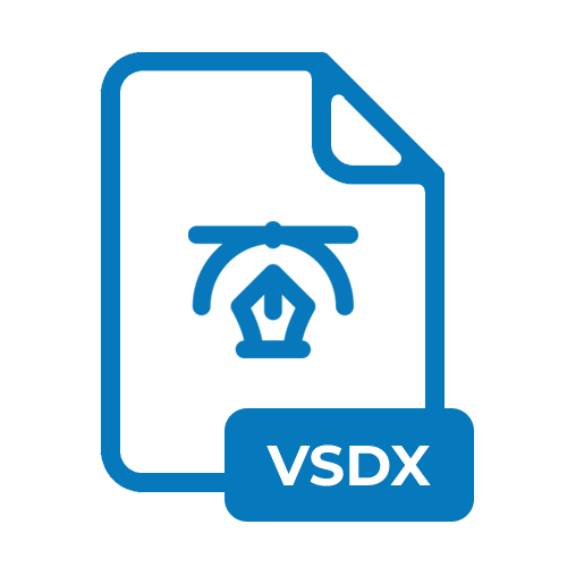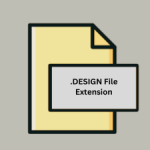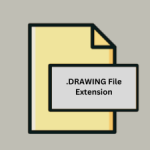.VSDX File Extension

Microsoft Visio Drawing
| Developer | Microsoft |
| Popularity | |
| Category | Vector Image Files |
| Format | .VSDX |
| Cross Platform | Update Soon |
What is an VSDX file?
The .VSDX file extension is primarily associated with Microsoft Visio, a diagramming and vector graphics application. It serves as the default file format for saving diagrams, flowcharts, organizational charts, and other visual representations created using Visio.
More Information.
Visio was originally released in 1992 as a diagramming tool for Windows. It gained popularity due to its user-friendly interface and extensive library of shapes and templates, making it suitable for both technical and non-technical users to create professional diagrams.
Origin Of This File.
Microsoft Visio was first developed by Shapeware Corporation, which was acquired by Microsoft in 2000. The software has evolved over the years to become a standard tool for creating complex diagrams.
File Structure Technical Specification.
- Format: Binary format based on the Office Open XML standard.
- Components: Contains XML-based elements that describe the structure and properties of diagrams, along with embedded graphics and metadata.
- Compatibility: .VSDX files are compatible with Microsoft Visio 2013 and later versions.
How to Convert the File?
Windows
- Using Microsoft Visio:
- Open the .VSDX file in Microsoft Visio.
- Go to the “File” menu and choose “Save As.”
- Select the desired format (e.g., PDF, JPEG, PNG) from the list of options.
- Follow the prompts to complete the conversion.
- Third-Party Converters:
- Use online conversion tools or third-party software that supports .VSDX to your desired format conversion.
Linux
- Using Wine and Microsoft Visio:
- Install Wine on your Linux distribution.
- Install Microsoft Visio using Wine.
- Open the .VSDX file in Microsoft Visio.
- Follow the steps similar to Windows for conversion.
- Alternative Software:
- Utilize alternative diagramming software that supports .VSDX files and allows export to other formats.
Mac
- Microsoft Visio for Mac:
- Open the .VSDX file in Microsoft Visio for Mac.
- Go to the “File” menu and select “Save As.”
- Choose the desired format for conversion (e.g., PDF, JPEG, PNG).
- Third-Party Converters:
- Look for third-party tools or online services that support .VSDX conversion on macOS.
Android
- Using Apps:
- Install an app that supports .VSDX files on your Android device.
- Open the .VSDX file in the app.
- Use the app’s export or save options to convert to other formats (e.g., PDF, PNG).
iOS
- Using Apps:
- Install an app that supports .VSDX files on your iOS device.
- Open the .VSDX file in the app.
- Use the app’s export or save options to convert to other formats (e.g., PDF, PNG).
Others
- Online Conversion Tools:
- Use online services that offer .VSDX to other format conversions.
- Upload the .VSDX file to the website and select the desired output format.
- Cross-Platform Software:
- Utilize diagramming software or converters that run on multiple platforms and support .VSDX file conversions.
Advantages And Disadvantages.
Advantages:
- Rich feature set for creating detailed diagrams.
- Integration with other Microsoft Office applications.
- Extensive template library.
- Support for collaboration and sharing.
Disadvantages:
- Proprietary format, which may require Microsoft Visio to view and edit.
- Limited support on non-Windows platforms without specialized software.
How to Open VSDX?
Open In Windows
Open .VSDX files directly with Microsoft Visio.
Open In Linux
Use compatibility tools like Wine to run Microsoft Visio, or use alternative software with .VSDX support.
Open In MAC
Open .VSDX files using Microsoft Visio for Mac or third-party applications with Visio compatibility.
Open In Android
Limited native support; use specialized apps capable of opening .VSDX files or cloud services for viewing.
Open In IOS
Limited native support; use specialized apps capable of opening .VSDX files or cloud services for viewing.
Open in Others
Check for software that supports .VSDX files or convert them to a more widely supported format.













